Newport 818-BB Amplified Photodetector User manual
- Type
- User manual

Page 1 of 5
AMPLIFIED PHOTODETECTOR USER’S GUIDE
Thank you for purchasing your Amplified Photodetector. This user’s guide will help answer any questions you
may have regarding the safe use and optimal operation of your Amplified Photodetector.
TABLE OF CONTENTS
I.
Amplified Photodetector Overview ................................................................................................................. 1
II.
Operation of your Amplified Photodetector .................................................................................................... 1
III.
Troubleshooting ............................................................................................................................................... 2
IV. Drawings: Amplified Photodetectors .............................................................................................................. 2
V.
Specifications: Amplified Photodetectors ....................................................................................................... 3
VI. Schematics: Amplified Photodetectors ............................................................................................................ 3
VII. Glossary of Terms .......................................................................................................................................... 4
I. Amplified Photodetector Overview
The Amplified Photodetectors contain PIN photodiodes that utilize the photovoltaic effect to convert
optical power into an electrical current. Figure 1 below identifies the main elements of your Amplified
Photodetector.
Figure 1: Amplified Photodetector
When terminated into 50Ω into an oscilloscope, the pulsewidth of a laser can be measured. When
terminated into a spectrum analyzer, the frequency response of a laser can be measured.
II. Operation of your Amplified Photodetector
A. Caution: Eye safety precautions must be followed when utilizing any equipment used in the vicinity
of laser beams. Laser beams may reflect from the surface of the detector or the optical mount and
caution must be exercised.
B. Mount the detector to an optical stand by the mounting holes on the bottom of the detector housing.
An 8/32 nylon standoff is included to isolate the detector from the optical stand if noise is generated
due to grounding through the stand.
Sensor
Aperture
BNC
Connector
2.5mm
Power Jack

Page 2 of 5
C. Adjust the voltage of the oscilloscope to 100mV/division before connecting the detector.
D. Connect the detector to the oscilloscope using a 50Ω coaxial cable that one meter or less.
E. Use the 50Ω termination input of the oscilloscope. If the oscilloscope does not have a 50Ω input,
connect the coaxial cable to a 50Ω terminator and connect this to the oscilloscope’s 1MΩ input.
F. When possible, use a scatterplate (white paper works) to integrate the laser beam. Focus on the
active area only if you need increased sensitivity.
G. If the full bandwidth of the detector is not needed, use lowpass, bandpass, or highpass filters to
remove excess noise.
III. Troubleshooting
A. No signal is seen the first time the detector is used.
1. Is the AC power supply plugged in?
2. Is the detector terminated into 50Ω at the oscilloscope?
3. Is the wavelength of the laser within the spectral range of the detector?
4. Is the signal high off the scale on the oscilloscope?
5. Inspect the diode for possible damage.
6. If increasing the incident power does not result in a higher voltage output, the detector is
probably saturated. Check the photodetector’s data sheet for the Maximum Linear Rating
specification.
7. Are all the connectors securely in place?
8. Is the bandwidth you are trying to measure below the low frequency cutoff of 75kHz?
IV. Drawings: Amplified Photodetectors
A. 818-BB-21A, 818-BB-30A Dimensions:

Page 3 of 5
V. Specifications: Amplified Photodetectors
Part No. (Model)
818-BB-21A 818-BB-30A
Detector Material
Silicon
InGaAs
Rise Time/Fall Time (ps)
<500/<500 <400/<400
Conversion Gain
450 V/W at 830nm 900 V/W at 1300nm
Power Supply (VDC)
24 24
Spectral Range (nm)
350-1100 800-1750
Bandwidth
30kHz—1.2GHz 30kHz—1.5GHz
Active Area Diameter
400µm 100µm
Acceptance Angle (1/2 angle)
10
⁰
20
⁰
Noise Equivalent Power (pW/√Hz )
<60 <30
Maximum Linear Rating
1.3V peak 1.3V peak
Mounting (Tapped Holes)
8-32 or M4 8-32 or M4
Output Connector
BNC BNC
VI. Schematics: Amplified Photodetectors

Page 4 of 5
VII. Glossary of Terms
Amplifier: Provides a power gain of 26dB throughout the photodiode’s bandwidth. The photodiode
current is converted to an output voltage.
Bandwidth: Unlike non-amplified photodetector bandwidth, which is defined as the range of
frequencies from 0Hz (DC) to the frequency at which the amplitude decreases by 3dB, the amplified
photodetectors have a low frequency cutoff of -3dB, which is greater than 0Hz due to the DC Block
Capacitor. Bandwidth and rise time can be approximately related by the equation:
Bandwidth ≈ 0.35/rise time for a Gaussian pulse input.
Bias Voltage: The photodiode’s junction capacitance can be modified by applying a reverse voltage.
The bias voltage reduces the junction capacitance, which causes the photodiode to have a faster
response.
BNC Connector: Used to connect the customer’s coaxial cable.
Conversion Gain: The relative level of the optical input power that is amplified and converted into a
voltage output.
Dark Current: When a termination is present, a dark current (nA range) will flow if the photodiode is
biased. Disconnecting the coaxial cable will prevent this current from flowing.
DC Block Capacitor: Prevents the DC voltage that is supplied through the amplifier output from
exiting the detector which would cause a large DC offset voltage. Therefore, the amplified detector is an
AC coupled device and will have a low cut-off frequency as well as a high cut-off frequency.
Decoupling Capacitor: Maintains bias voltage when fast pulses cause the battery voltage to reduce (this
would slow the response time of the photodiode); the capacitor allows the battery to recover to its initial
voltage. It also acts as a filter for external power supplies.
Noise Equivalent Power (NEP): A function of responsivity and dark current and is the minimum
optical power needed for an output signal to noise ratio of 1. Dark current is the current that flows
through a reverse biased photodiode even when light is not present, and is typically on the order of nA.
Shot noise (Ishot) is a source of noise generated in part by dark current; in the case of reversed biased
diodes it is the dominant contributor.
Photodiode: Converts photons into a photocurrent.
Resistor: Protects the photodiode from excessive current. This could occur if an external power supply
was too high in voltage, or if its polarity were reversed; this happens when a customer uses their own
power supply.
Responsivity: In amps per watt (A/W), responsivity is the current output of the photodiode for a given
input power, and is determined by the diode structure. Responsivity varies with wavelength and diode
material.
Rise Time/Fall Time: Rise Time is the time taken by a signal to change from a specified low value to a
specified high value. Fall Time is the time taken for the amplitude of a pulse to decrease from a
specified value to another specified value. A larger junction capacitance will slow the detector’s
response time.

Page 5 of 5
-
 1
1
-
 2
2
-
 3
3
-
 4
4
-
 5
5
Newport 818-BB Amplified Photodetector User manual
- Type
- User manual
Ask a question and I''ll find the answer in the document
Finding information in a document is now easier with AI
Related papers
-
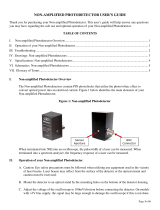 Newport 818-BB Non-Amplified Photodetector User manual
Newport 818-BB Non-Amplified Photodetector User manual
-
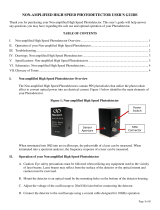 Newport 818-BB Non-Amplified High Speed Photodetector User manual
Newport 818-BB Non-Amplified High Speed Photodetector User manual
-
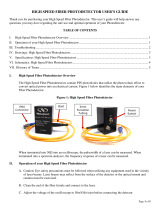 Newport 818-BB Non-Amplified High Speed Fiber Photodetector User manual
Newport 818-BB Non-Amplified High Speed Fiber Photodetector User manual
-
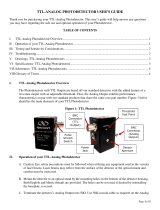 Newport 818-BB TTL Photodetector User manual
Newport 818-BB TTL Photodetector User manual
-
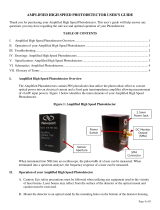 Newport 818-BB Amplified High Speed Photodetector User manual
Newport 818-BB Amplified High Speed Photodetector User manual
-
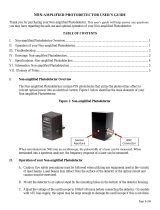 Newport Non-amplified Photodetector User manual
Newport Non-amplified Photodetector User manual
-
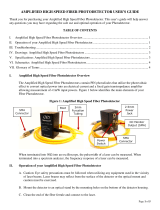 Newport 818-BB Amplified High Speed Fiber Photodetector User manual
Newport 818-BB Amplified High Speed Fiber Photodetector User manual
-
 Newport 918D Photodiode Sensor User manual
Newport 918D Photodiode Sensor User manual
-
 Newport 818-ST2 and 918D-ST Series Wand Detector User manual
Newport 818-ST2 and 918D-ST Series Wand Detector User manual
-
 Newport 819C/D Series Integrating Sphere Detector User manual
Newport 819C/D Series Integrating Sphere Detector User manual
Other documents
-
Apogee MP-200 Owner's manual
-
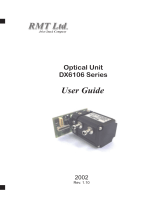 RMT Robotics DX6106 User manual
RMT Robotics DX6106 User manual
-
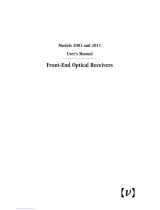 New Focus 2001 User manual
New Focus 2001 User manual
-
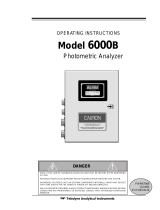 Teledyne 6000B User manual
Teledyne 6000B User manual
-
 Teledyne 6020 User manual
Teledyne 6020 User manual
-
Rosemount MicroCEM-Rev A User manual
-
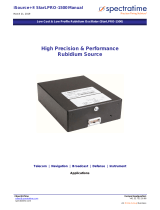 Orolia iSource+ StarLPRO-1500 User manual
Orolia iSource+ StarLPRO-1500 User manual
-
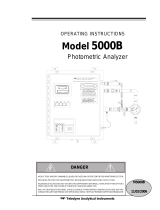 Teledyne 5000B User manual
Teledyne 5000B User manual
-
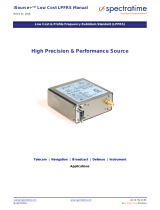 Orolia iSource+ Low Cost LPFRS User manual
Orolia iSource+ Low Cost LPFRS User manual
-
IRIS P522 User manual





















